How Rain — and Your Generosity — Could Rewrite Mawia’s Future
“I want to become a doctor,” said 17-year-old Mawia. “I’ve seen how sickness from dirty water affects my classmates and my family, and I want to help people live healthier lives. But to get there, I need time to study and focus — clean water would really help with that.”
But at Mawia’s school, Kyethani Secondary School, water is always scarce, expensive, contaminated, or far away. Right now, Mawia’s dream is in danger.
What makes the water at Mawia’s school so scarce?
Mawia lives in Southeast Kenya. Unlike many of The Water Project’s service areas, where water is always around but unsafe to drink, southeast Kenya is almost completely dry for around half of the year. This dire situation forces people to take advantage of the only water source around: digging down into dry riverbeds for water from the previous rainy season.
Naturally, collecting water this way is not a pleasant experience.
“The river dries up sometimes, and the scoop holes become shallow and dirty,” Mawia explained. “The tanks at school are too small, and the rainwater doesn’t last. It makes me feel sad and hopeless because we are trying hard to learn, but water problems slow us down.”
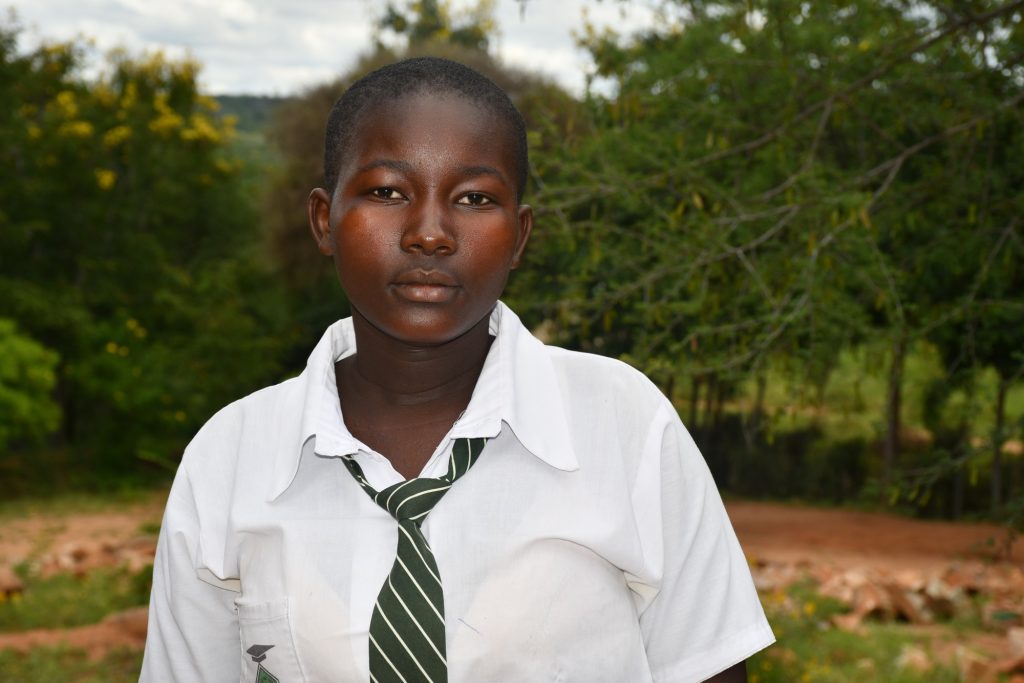
The school serves 112 students and 14 staff members. The campus has two small rain tanks, but they inevitably run out of water soon after the last rains. With the rain tanks being so small and the walls so thin under the hot sun, the water evaporates or gets used up quickly.
“Apart from being located in a semi-arid region with limited rainfall occurrence, the small plastic tanks cannot harvest enough downpour to sustain us throughout the drought period,” said teacher Eric Kithuma. “Our school’s operations (like cooking and cleaning) as well as current student enrollment lead to a quick depletion of the little available water.”
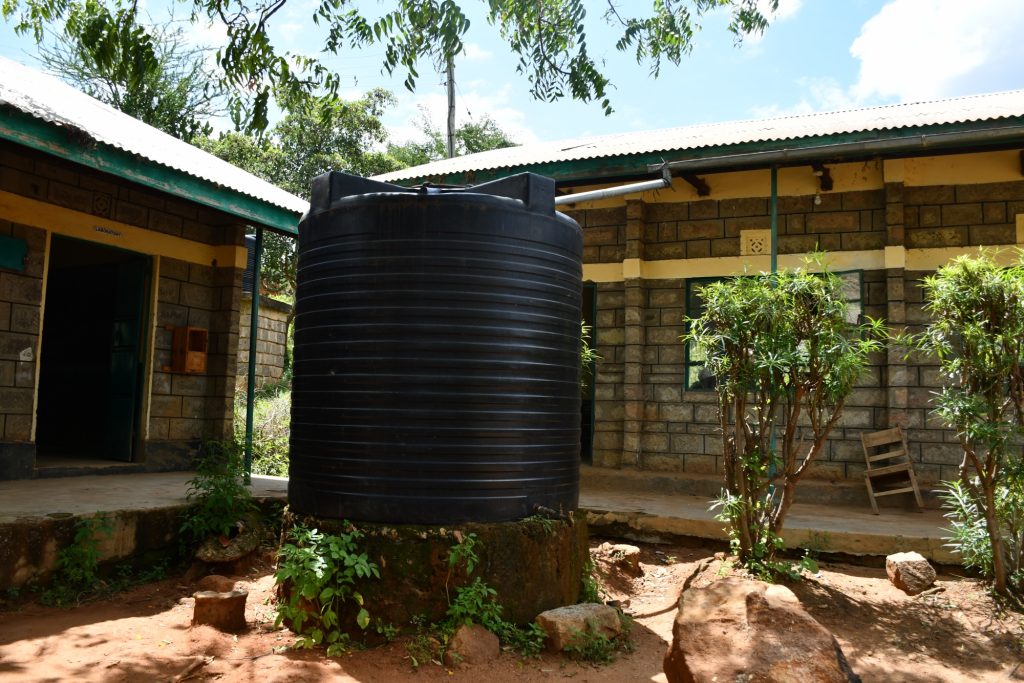
What makes the water so expensive?
When the water within their tiny rain tanks disappears, the school’s options dwindle. The administration can send its students to fetch water from the scoop holes in the faraway Tyaa River…or spend its limited resources on water vendors, who fetch water from the same place.

At least when the school purchases water, students can stay in class. But the water’s questionable quality remains the same no matter who does the collecting.
Why is the water contaminated?
“The water vendors fetch water mostly from scoop holes, which are open to contamination because they are unprotected,” said Alex Koech, our Communications Officer for the area. “The water from scoop holes is not clear, [and it’s also] saline with an unpleasant taste due to [the] contamination [of] dust, animal excretions, and debris.”

“I get sick quite often,” Mawia said. “Especially during the dry seasons, when we rely on water brought by vendors. Sometimes the water looks clean, but it’s not safe, and we end up with stomachaches or diarrhea.
“There was a time last term when I drank water at school that had a strange taste,” Mawia continued. “Later that evening, I had a bad stomachache and couldn’t eat or study. I had to miss school for two days, and I felt weak and frustrated because I also missed an important lesson in biology, which is my favourite subject. They took me to the community [health center], where I was diagnosed and given drugs to quell the illness.”
Teacher Eric added more context: “During [the] last drought season, water was scarce, and learners would drink any available water in school regardless of whether it was treated or not. This led to several instances of water-related infections, and it felt bad having learners uncomfortable in class or absent altogether. I think it is a very unfortunate situation, because these learners have to compete with other students all over the country, who could be better advantaged in terms of water availability in school. When learners are sick and absent from school, it forces them to miss out on the teachers’ class lessons, leading to dismal academic performance.”

How else does the lack of water impact the students’ health?
The water’s quality is not the only factor affecting student health.
“Our staff constantly face the pressure of stretching limited water supplies to meet all needs: cleaning, drinking, cooking, and sanitation,” said Eric. “During dry periods, we have to prioritize certain uses and limit others, which can lead to tough decisions and frustration. When there’s no water, it also becomes difficult to clean classrooms, latrines, and maintain general hygiene, creating an uncomfortable and unhealthy learning environment.”
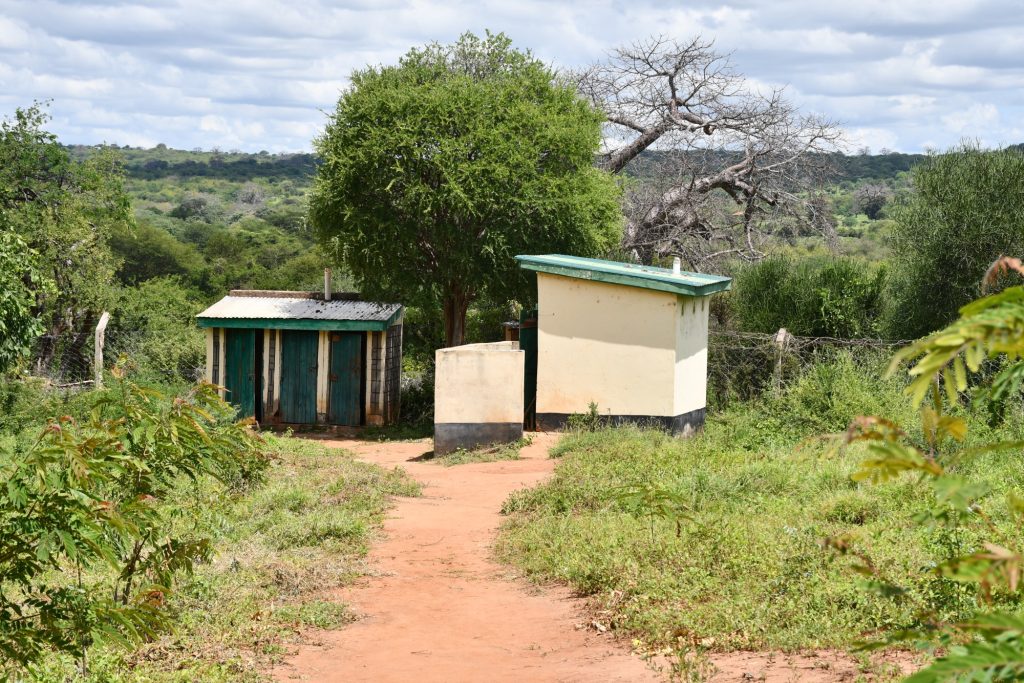
“The learning setting is unconducive due to poor hygiene, which makes it difficult to concentrate in class,” Mawia shared.
Why does water scarcity impact students’ academic success?
Even when the school purchases water from local vendors, funds are insufficient to include water for the school garden.
Why does a school without ready access to water have a garden? The garden serves as a practical setting for teaching agriculture classes, which are a requirement of the Kenyan government’s Competency-Based Education program. But even though the school can’t afford to send vendors to the river for water, someone needs to fetch it.
Oftentimes, Mawia is that someone. Three times a day, she is sent to fetch water for the school garden.
“Fetching water takes [a] long [time] because we walk all the way to [the] Tyaa River to fetch water for agricultural practices, which is far from school (about 1.5 miles one way),” Mawia said. “Sometimes, we wait in line because other people are also collecting water, and we have to carry heavy jerrycans back, which slows us down and tires us out.
“The river is open and shared with animals. You never know what has gotten into the water upstream. The scooped-out sand in the scoop holes often collapses, and there have been times when some of us have fallen while trying to fill jerry cans.
“If I didn’t have to fetch water, I would use that time to revise for my exams, complete my homework, or help in the school farm in a better way. I would also have more energy to focus in class. Sometimes I arrive late to lessons or miss them completely, and that affects my performance.
“[When I fetch water], I feel exhausted and stressed. It’s heavy, it takes time, and it pulls me away from schoolwork. Sometimes, I even feel angry, because I know it’s not fair, but we don’t have another choice right now.”
Mawia is right — the situation at her school isn’t fair to the students, teachers, or parents.
How are the students’ families affected by the water situation?
“Students are directly affected when the school runs out of rainwater and has to rely on expensive water vendors,” explained Eric. “Since the cost [of the water vendors] is shared among all learners, many families struggle to pay on time. As a result, we’re forced to send students home to remind their parents about the payments, which disrupts learning. There’s also the administrative burden of collecting water payments and handling complaints from parents, which takes time away from teaching and school planning.”
What has the school done in the past to try and fix the situation?
When the school opened in 2008, the two rain tanks on campus would have been enough for the school’s population, at least in the rainy season. But rain tanks are expensive to purchase, and even more expensive to build.
In a wealthier nation, the administration could expect help from the government to serve its students. But the government also lacks the available resources.
“The school has tried seeking help from the county government, national government, politicians, and well-wishers,” Alex explained, “but their efforts have proved futile or yielded paltry results.”
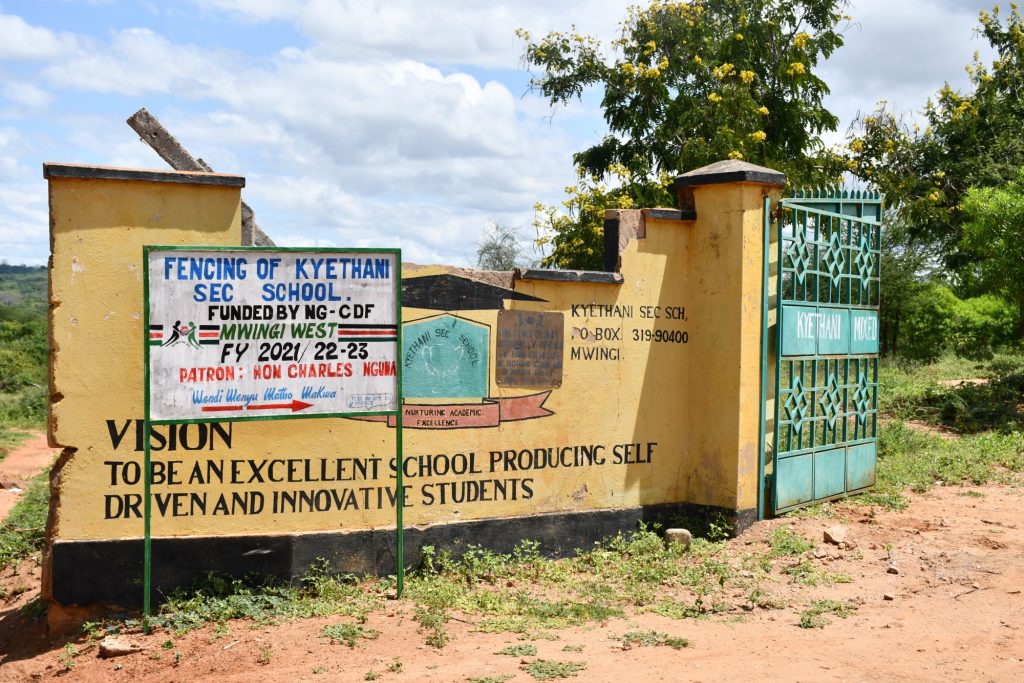
How would a new, high-capacity rainwater harvesting tank help the school?
Through The Water Project’s years working in this region, we’ve found that high-capacity rainwater harvesting tanks, built to last, are the perfect water source for schools in southeast Kenya. This is true because of the area’s hot climate and the increasingly erratic rainy seasons.
After many months without rain, the ground around the school — and its local rivers — will become hard and impermeable. When the rains do finally arrive, some water seeps into the sand at the river’s base, but most of it washes away downstream. This annual cycle means that storing as much rainwater as possible — in a vessel that won’t allow the water to evaporate under the hot, dry sun — is the school’s best bet.

Teacher Eric was already busy dreaming about what such a new water project would mean for his school when Alex interviewed him.
“With reliable access to safe water, students would stay in class consistently and not be sent home due to unpaid water bills,” Eric said. “The school environment would be cleaner, healthier, and more supportive of learning. Improved hygiene and access to drinking water would reduce illness and absenteeism, allowing students to focus better and achieve higher academic outcomes.
“A new 104,000-liter masonry rainwater tank would provide a more sustainable and cost-effective water supply, reduce [our] dependency on vendors, and eliminate the need to send students home over water fees. It would also allow us to focus on teaching rather than water crisis management.
“To me, water means stability, dignity, and progress. It is the foundation of a well-run school. Without it, even the best plans stall — classes are disrupted, hygiene suffers, and both students and teachers lose focus. Water enables us to provide a safe, clean, and inspiring place for students to learn and grow. It’s not just about survival — it’s about giving our students the opportunity to thrive.”
Mawia, too, expressed her excitement at the prospect of a reliable source of safe water at Kyethani Secondary School. “Fetching water takes up time that I should be in class or studying. A new water point in school will mean clean and safe water is always nearby. We won’t need to walk long distances, risk injuries, or drink unsafe water. It will also help prevent waterborne diseases and reduce school absences.”
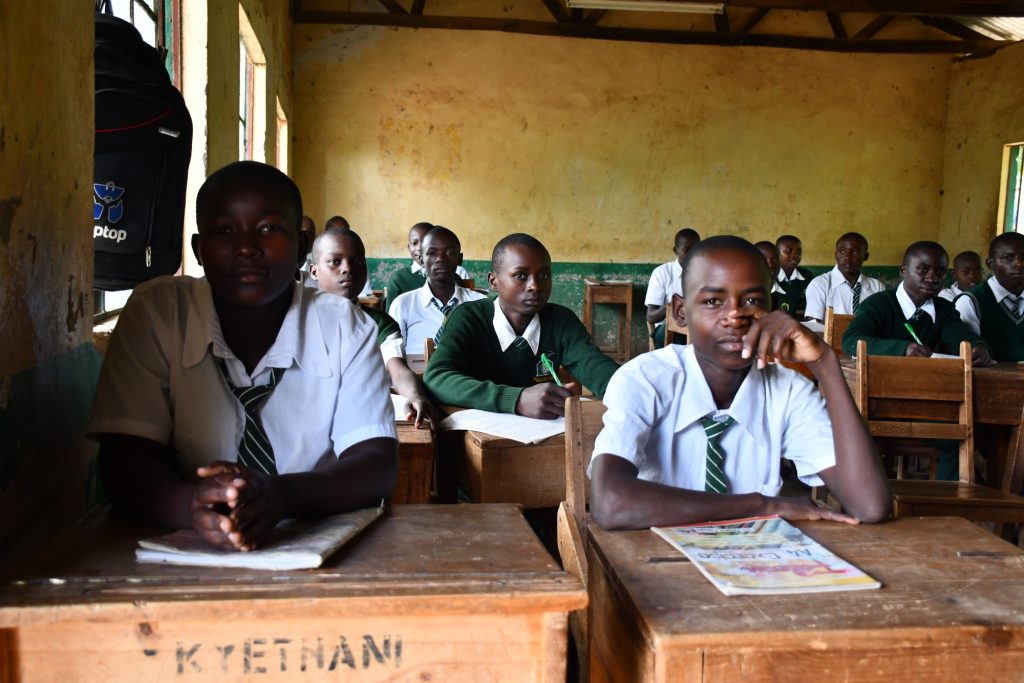
Alex concluded: “Kyethani Secondary School has several development goals, including building more infrastructure, improving hygiene and sanitation, enhancing agriculture programs, and expanding greenery in the school compound. The new water point will be essential in achieving these goals. With adequate and reliable water, the school can maintain cleaner facilities, irrigate gardens and trees, and support practical learning in agriculture. This will create a better learning environment and promote student health, attendance, and performance.
“[Mawia’s] story reminded me that clean water doesn’t just improve health; it fuels education, dignity, and hope for a better future.”
How can I help?
In this month leading up to Giving Tuesday December 2nd, we’re raising money to fund the new rain tank at Mawia’s school — and every gift toward this goal will be matched dollar-for-dollar.
But together, contributing what we can each comfortably manage, we can change ambitious Mawia’s life forever. She will no longer waste her energy trekking back and forth to the distant Tyaa River three times per day. She will say goodbye to water-related illnesses. Instead, she will devote her time to learning how contaminated water makes people sick. And someday down the road, she will serve her community in the way she dreams of.
Will you join us in bringing Mawia’s dream to life through safe, reliable water today?
Home More Like ThisTweet